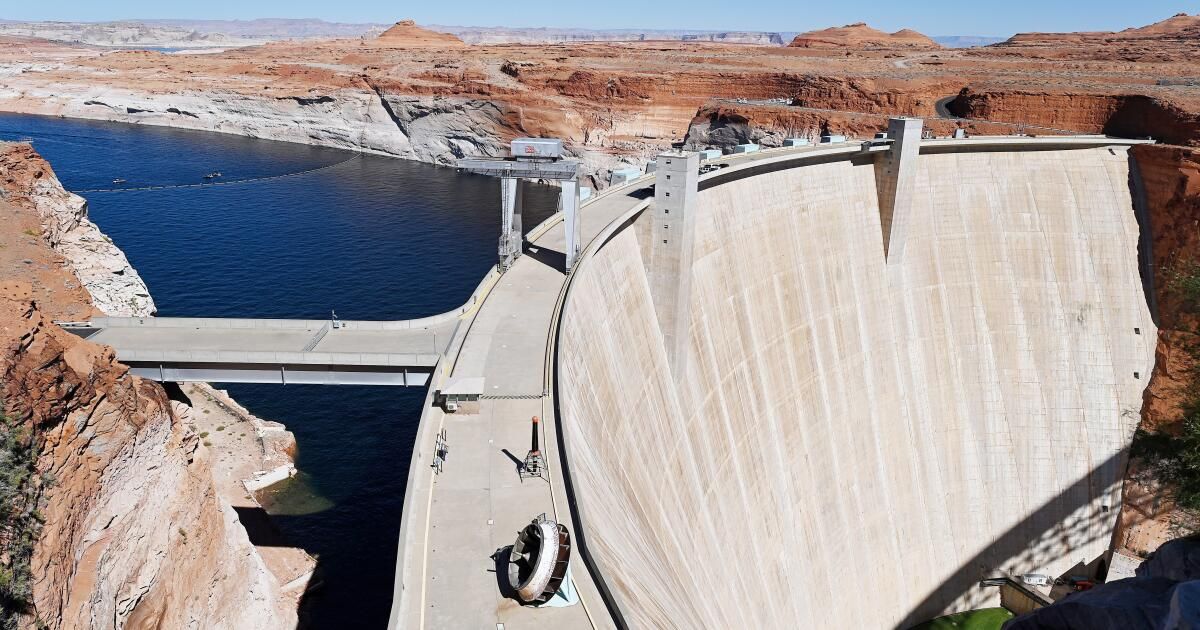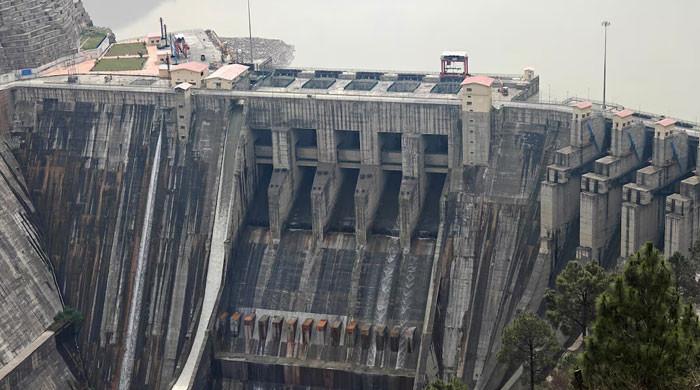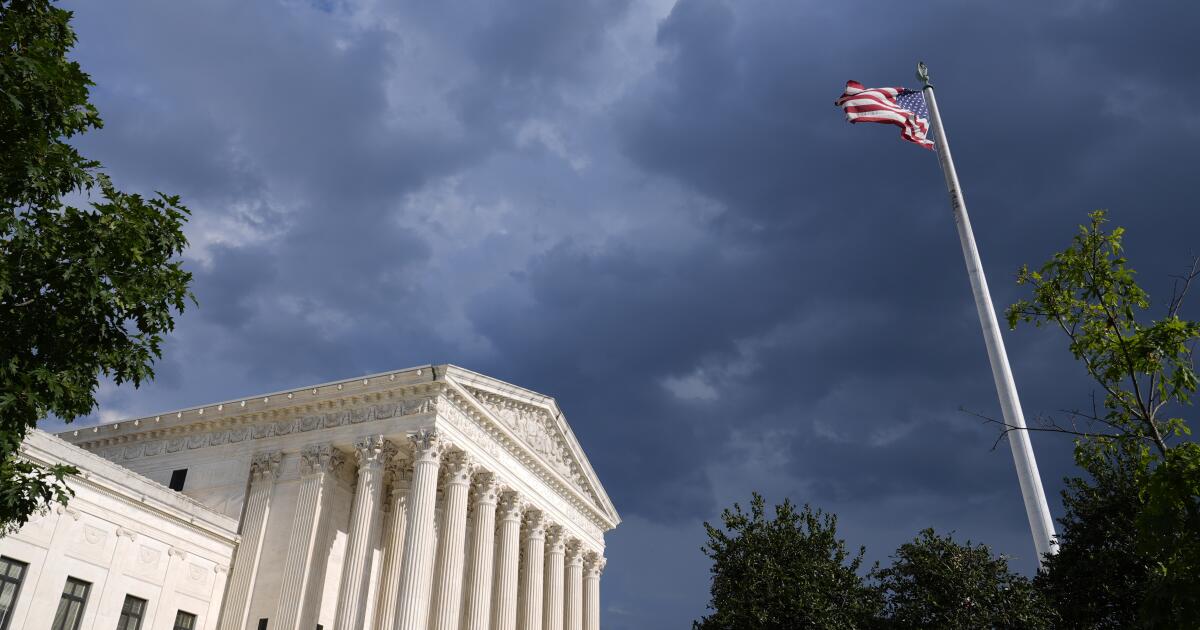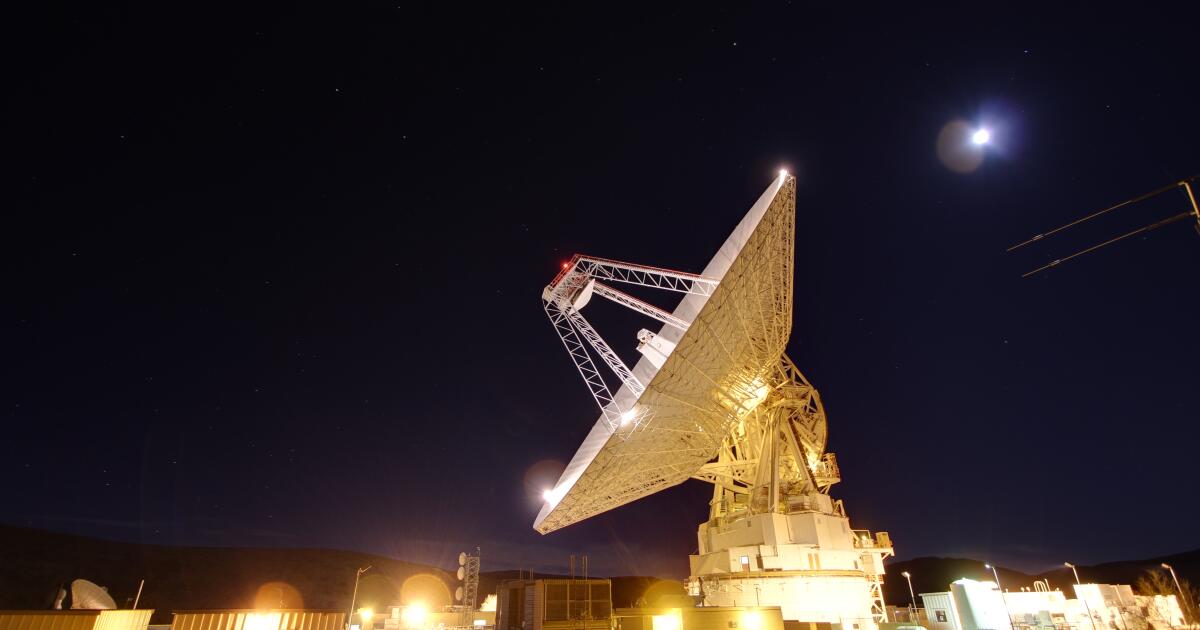Federal officials have discovered damage inside the Glen Canyon Dam that could impose limits on the amount of Colorado River water released into the reservoir's lower levels, raising risks that the Southwest could face previously unanticipated shortages.
The damage was recently detected in four 8-foot-wide steel pipes, called river outlet works, that allow water to pass through the dam in northern Arizona when Lake Powell reaches low levels. Dam managers detected deterioration in the pipes after conducting an exercise last year that sent large flows from the dam into the Grand Canyon.
To reduce the risks of additional damage, officials at the Federal Bureau of Reclamation have determined that flows should be reduced in case of low reservoir levels. Infrastructure problems at one of the country's largest dams have created new complications as water managers representing seven Western states negotiate long-term plans to reduce water use to address the river's chronic supply-demand gap and adapt to the effects of climate change.
“Due to the design of the dam, there are real structural risks at low elevations that could potentially strand as much water in Lake Powell as California's largest reservoir, Lake Shasta,” said JB Hamby, California's Colorado River Commissioner.
Aggressive and impactful reporting on climate change, the environment, health and science.
Such a scenario could cause unexpected major cuts in water supplies to California, Nevada, Arizona and Mexico.
“There are a couple of ways to approach this, without an infrastructure solution,” Hamby said in an email. “One, reduce emissions to Arizona, California, Nevada and Mexico.”
But he said that could be a violation of the 1922 Colorado River Compact, which guarantees that states in the lower river basin receive a certain amount of water.
A second option, Hamby said, would affect the four upper river basin states: Colorado, Wyoming, Utah and New Mexico. He said that could include reducing water use in upper basin states or releasing water from upstream reservoirs.
“An engineered solution is preferable to both options,” Hamby said.
Efforts to analyze possible solutions appear to be in the early stages.
The problems came to light at a meeting in Arizona last month. Brenda Burman, general manager of the Central Arizona Project, presented a diagram showing the dam's eight large tubes, called gates, through which water normally passes, as well as smaller outlet tubes that allow water to be released at low levels of the reservoir.
“They have some unknown issues about how these river mouth works would work. It is very difficult to hear new information,” Burman said.
He said officials found sediment, “thinning of pipes” and “cavitation.” Cavitation refers to the formation and collapse of air bubbles in flowing water and is known to damage propellers, pumps and other structures. Under certain flow conditions, cavitation can puncture and tear metal, damaging infrastructure.
Federal officials are looking at how to address the problems, Burman said, adding that the Bureau of Reclamation is “known for being able to find engineering solutions to engineering problems.”
“We very much look forward to working with Reclamation in the coming months to investigate exactly what can be done,” he said.
The problems with a crucial part of the dam's water supply system, which were first reported by the Arizona Daily Starhave raised new questions about what type of solution would be most effective, how much it would cost and how long repairs might take.
The Colorado River supplies water used by cities, farms, and tribal nations in seven states and northern Mexico. The river has long been over-allocated and its average flow has declined sharply since 2000. Research has shown that global warming is intensifying years of drought and contributing significantly to the reduction of flows.
The water level in Lake Powell, the second largest reservoir in the country, is now at 33% of its capacity: its surface is about 68 feet above sea level. Lowest level at which the dam can continue generating electricity.. Snowpack in the upper Colorado River Basin this year has been above average, and melting ice will raise reservoir levels for now.
But long-term projections show that substantial reductions in water use In the coming years, measures will be needed to reduce the risk of reservoirs reaching critically low levels.
Infrastructure issues at Glen Canyon Dam add another layer of complications and uncertainty.
The Bureau of Reclamation detailed some of the agency's initial steps in a Note of March 26.. Richard LaFond, director of the agency's Technical Service Center, wrote that if the reservoir were to fall below the minimum level for generating electricity, “there are concerns about reliance on river mouth works.”
The latest federal projections show the reservoir is expected to remain above that level for the next two years.
LaFond said his team is using scale models in a lab to study how these problems could be addressed.
The Bureau of Reclamation responded to The Times' questions by email and said the outlet tubes “were not designed to be used indefinitely to deliver water to low elevations.”
“It is important to note that our knowledge will increase as time goes on and that we may need to adjust our actions, as appropriate, consistent with the best emerging information, engineering standards and current science,” the Office of Claim.
Agency officials said that while they study the problems, they plan to perform maintenance that will include “relining the pipes.” They said they do not yet have cost estimates for the repairs.
Lake Powell has glowed between the red canyon walls along the Arizona-Utah border since the Glen Canyon Dam was completed in the 1960s.
Environmental activists, who have long urged federal officials to consider draining the reservoir, said the dam's internal problems create serious risks of unforeseen water shortages in Southern California, Arizona, Nevada and Mexico.
“We need to discuss how the dam's aging pipelines could impact 25 million people downstream under water-scarce conditions, especially under persistent water-scarce conditions, as we expect,” said Kyle Roerink, executive director of the Great Basin Water Network. . “We need the office to step up and help us all get a better idea of how to fix it.”
Roerink's organization, along with the Utah Rivers Council and the Glen Canyon Institute, had warned in a 2022 report report that the “antiquated plumbing system within Glen Canyon Dam represents a liability,” with risks of precisely the type of problems that have come to light.
Roerink called on the Biden administration to incorporate its analysis of Glen Canyon Dam's vulnerabilities into its ongoing process of considering long-term plans to reduce water use.
The Bureau of Reclamation plans to analyze alternatives for new rules governing river management starting in 2026, when current rules expire.
The federal government has received separate proposals from the upper and lower basin states, tribes, environmental groups and water researchers.
The risk of a choke point at Glen Canyon Dam not only increases uncertainty, Roerink said, but also “creates the potential for more acrimony.”
He said there should be an open discussion, as part of the federal review, to look at the problem and what can be done about it.
That “would create an opportunity for the public to examine, scrutinize and understand everything the office knows, and also consider the known unknowns,” Roerink said. “Let's talk about uncertainty and what that could mean.”
Newsletter
Towards a more sustainable California
Get Boiling Point, our newsletter exploring climate change, energy and the environment, and be part of the conversation and the solution.
You may occasionally receive promotional content from the Los Angeles Times.












